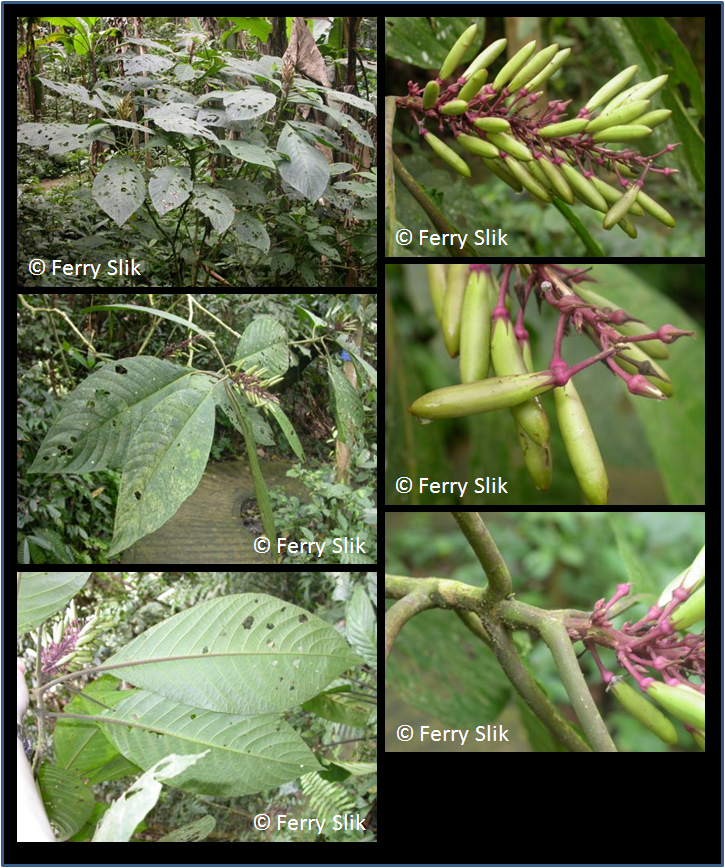Phlogacantus curviflorus (Wallich) Nees, in Wallich, Pl. Asiat. Rar. 3: 99 (1832)
Latin for 'curved flowers'.Synonyms
Justicia curviflora Wallich
Description
Shrubs, to 3 m tall. Petiole 1.5--5 cm; leaf blade elliptic to oblong, 12--30 X 9--15 cm, glabrous, both surfaces with punctulate cystoliths, abaxially
sometimes puberulous on veins, secondary veins 12--17 on each side of midvein, base broadly cuneate and decurrent to petiolate, apex acute to acuminate.
Thyrses spiciform, terminal, 14--18 X 6--8 cm. Bracts and bracteoles minute. Pedicel 5--8 mm, densely tomentose. Calyx deeply 5-cleft, connected at base;
segments triangular lanceolate, 5--7 mm, densely puberulous. Corolla brick orangish red to orange, ca. 5 cm, with densely yellow brown reflexed and
glandular hairs; tube ca. 4.2 cm, curved; limb 2-lipped; abaxial lip deeply 3-cleft; adaxial lip 2-cleft. Stamens 2, inserted at tube base, slightly
exerted; anthers 2-celled, abaxial??, elliptic. Staminodes 2, rudimentary, at base of filaments. Capsule terete, ca. 3.5 cm, with 10-seeds.
Ecology
In forest understoreys up to 1600 m elevation.
Distribution
Northeast India, Southern China, Northern Laos, Northern Thailand, Northern Burma, Northern Vietnam.
Local names
China: Huo yan hua.
